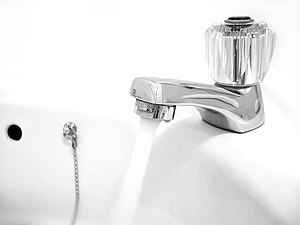 Image via Wikipedia
Image via Wikipedia
Charity Water hosted a cocktail party in Austin, Texas this past weekend and what a great event it was. It was Founder, Scott Harrison's first time in Texas and it couldn't have put on a better show. Nothing like spring time in Austin.
He gave a heartfelt presentation of how he got started with Charity Water, from Night Club promoter to rockstar philanthropist. Like many of us, he realized that there is more to life than partying and spending money extravagantly. We are all on this Earth for a purpose and once we tap into that, life is very rewarding. Scott has been able to provide clean drinking water for over a million people in developing countries through Charity Water and has changed those people's lives forever.
He gave us a glimpse into his vision for solving the water crisis in the world. It' s just amazing what a few dollars from everyone can do once they are collected and brought together. He started by asking his friends to donate a few dollars to his birthday party. He raised thousands and built the first 3 wells.
Think about it. A margarita here costs $12, a mexican martini $16, a bag of rice in a developing country costs $16 and that feeds a family of 4 for a month. $20 can give a person in Africa clean, safe drinking water for 20 years. If each of us just donated the price of one cocktail per month we would end the world's water crisis in just a few short years.
I spoke with Scott about MSI World Team's vision of helping those without water and how we want to help unite people for this common cause. If you are interested in joining us, visit our campaign page and make your charitable contribution. Let's make a difference now together.
Scott ended the presentation with Charity Water's most recent video campaign to help those in Haiti. We were all touched, moved and inspired as we watched.
Charity Water and Scott Harrison's story are very inspiring and really speak to what is possible when someone ignites a passion from within.
![Reblog this post [with Zemanta]](http://img.zemanta.com/reblog_e.png?x-id=b67cffb7-b455-4f4e-ac55-1a7dfdeedabd)

![Reblog this post [with Zemanta]](http://img.zemanta.com/reblog_e.png?x-id=00ef8ef5-8347-4aef-8d22-2fcbbbc69540)

![Reblog this post [with Zemanta]](http://img.zemanta.com/reblog_e.png?x-id=ec2908e7-f580-4f24-a6a6-b674b30a78ec)

![Reblog this post [with Zemanta]](http://img.zemanta.com/reblog_e.png?x-id=a3f2af89-468e-4965-8094-2107516b2fc4)


![Reblog this post [with Zemanta]](http://img.zemanta.com/reblog_e.png?x-id=53511a10-3897-407f-a6ee-638e3a6cbf68)

![Reblog this post [with Zemanta]](http://img.zemanta.com/reblog_e.png?x-id=e0358441-7558-4ff4-8e52-8020d86badb9)